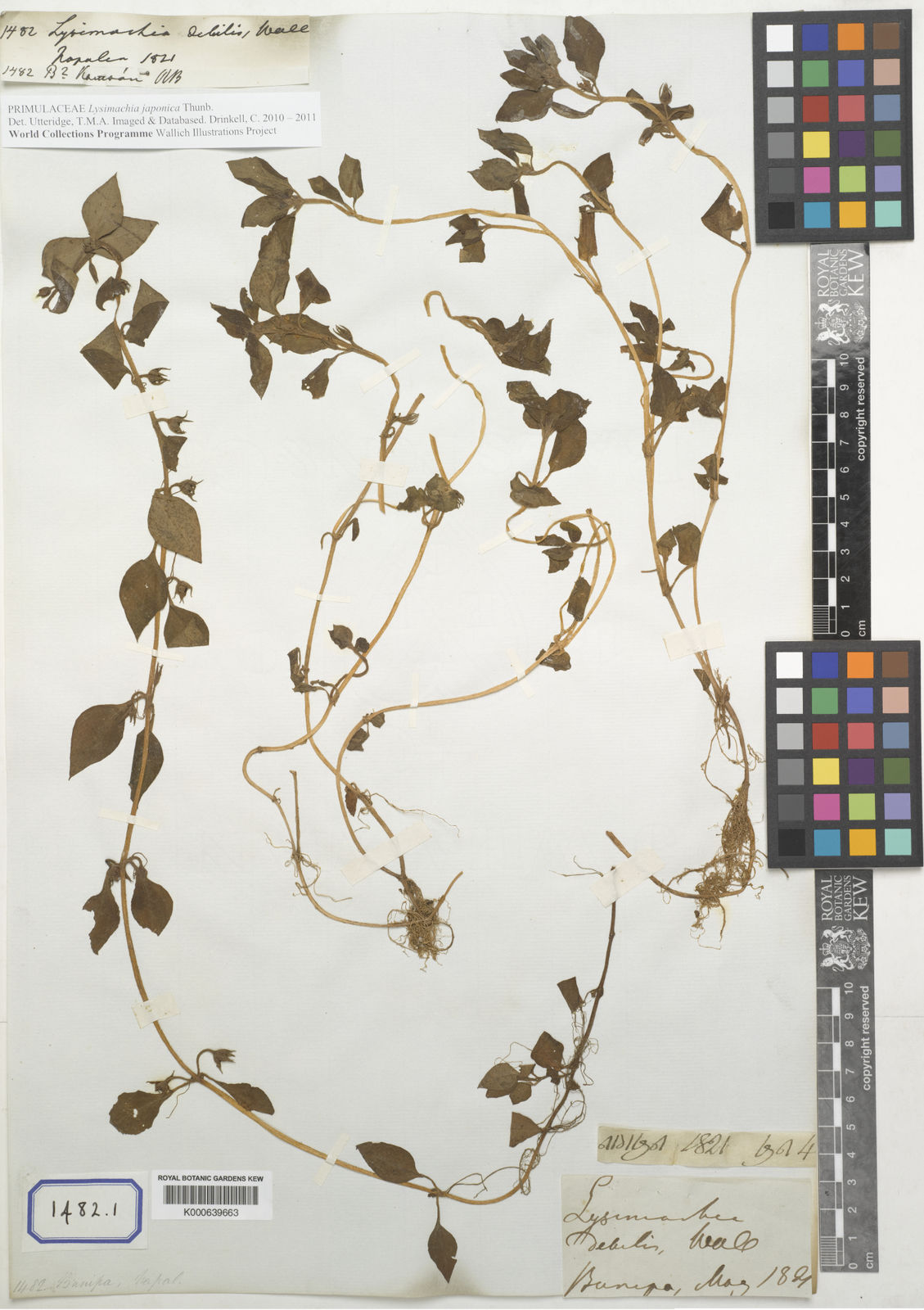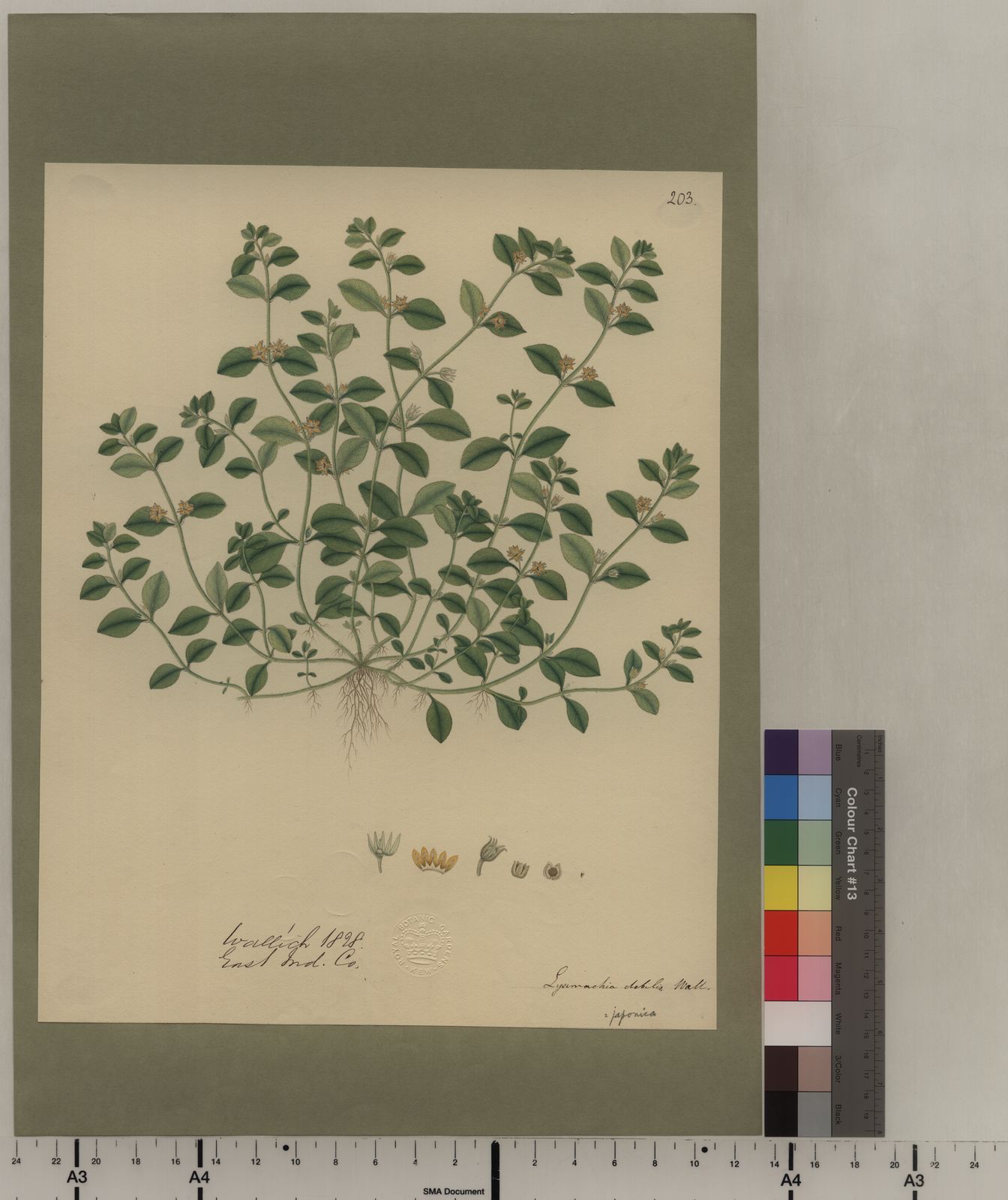Family: Primulaceae
Author: Thunb.
Bibliography: J.A.Murray (ed.), Syst. Veg. ed. 14.: 196 (1784)
Year: 1784
Status: accepted
Rank: species
Genus: Lysimachia
Vegetable: Unknown
Observations: NE. Pakistan to Temp. E. Asia
Description
Japanese yellow loosestrife, identified scientifically as Lysimachia japonica, belongs to the Primulaceae family. First described formally by Thunberg, it was included in J.A. Murray’s comprehensive botanical work, “Systema Vegetabilium,” in its 14th edition published in 1784.
This perennial herbaceous plant can be observed across a range of geographical regions from northeastern Pakistan to temperate areas of East Asia. Japanese yellow loosestrife is well-regarded for its vibrant yellow flowers, providing a splash of color in the understory of woodlands and forested areas.
While its bright blossoms make it a popular choice for gardeners looking to add a touch of wild beauty to their landscapes, it is also important to note the plant’s native habitat and the role it plays within those ecosystems. It attracts various pollinators, contributing to the biodiversity of these regions.
In terms of cultivation, Lysimachia japonica prefers moist, well-drained soils and can thrive in both full sun and partial shade, making it a versatile addition to any garden setting. Gardeners often seek out this plant not only for its aesthetic qualities but also for its resilience and ease of care.
Understanding the ecological impact and historical significance of the Japanese yellow loosestrife can enhance our appreciation for this intriguing plant species, rooted deeply in the natural history of temperate East Asia and beyond.
Common Names
Eng: japanese yellow loosestrife
En: Japanese yellow loosestrife
De: Japanischer Gilbweiderich
Synonyms
- Lysimachia japonica var. thunbergiana (F.Maek.)
Distribution
- Assam (native)
- Bangladesh (native)
- China Southeast (native)
- East Himalaya (native)
- Hainan (native)
- Japan (native)
- Korea (native)
- Myanmar (native)
- Nansei-shoto (native)
- New Guinea (native)
- Ogasawara-shoto (native)
- Pakistan (native)
- Philippines (native)
- Sulawesi (native)
- Taiwan (native)
- West Himalaya (native)
- Louisiana (introduced)
- Transcaucasus (introduced)
- Turkey (introduced)
- West Virginia (introduced)
Additional Images
Flower
Taken May 28, 2022 by Patrick FAYOLLE (cc-by-sa)
Taken Jan 1, 1900 by EOL − WVU Herbarium (cc-by-nc-sa)
Taken Jan 1, 1900 by EOL − WVU Herbarium (cc-by-nc-sa)
Leaf
Taken May 28, 2022 by Patrick FAYOLLE (cc-by-sa)

© copyright of the Board of Trustees of the Royal Botanic Gardens, Kew.

© copyright of the Board of Trustees of the Royal Botanic Gardens, Kew.
Sources
- WFO (No URL)
- IPNI (No URL)
- GBIF (https://www.gbif.org/species/3169390)
- POWO (http://powo.science.kew.org/taxon/urn:lsid:ipni.org:names:701180-1)
- PlantNet (https://identify.plantnet.org/species/the-plant-list/Lysimachia japonica Thunb.)




